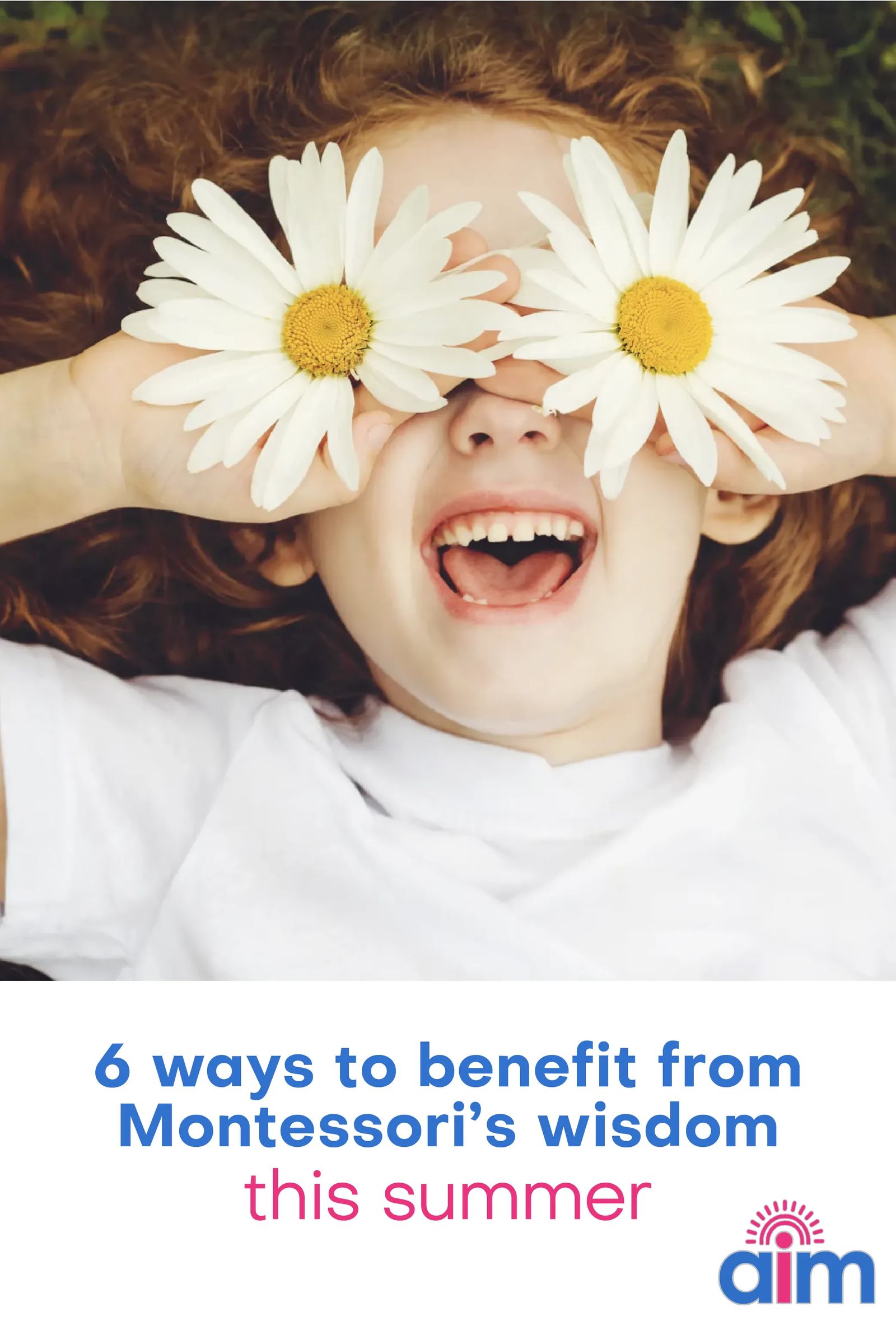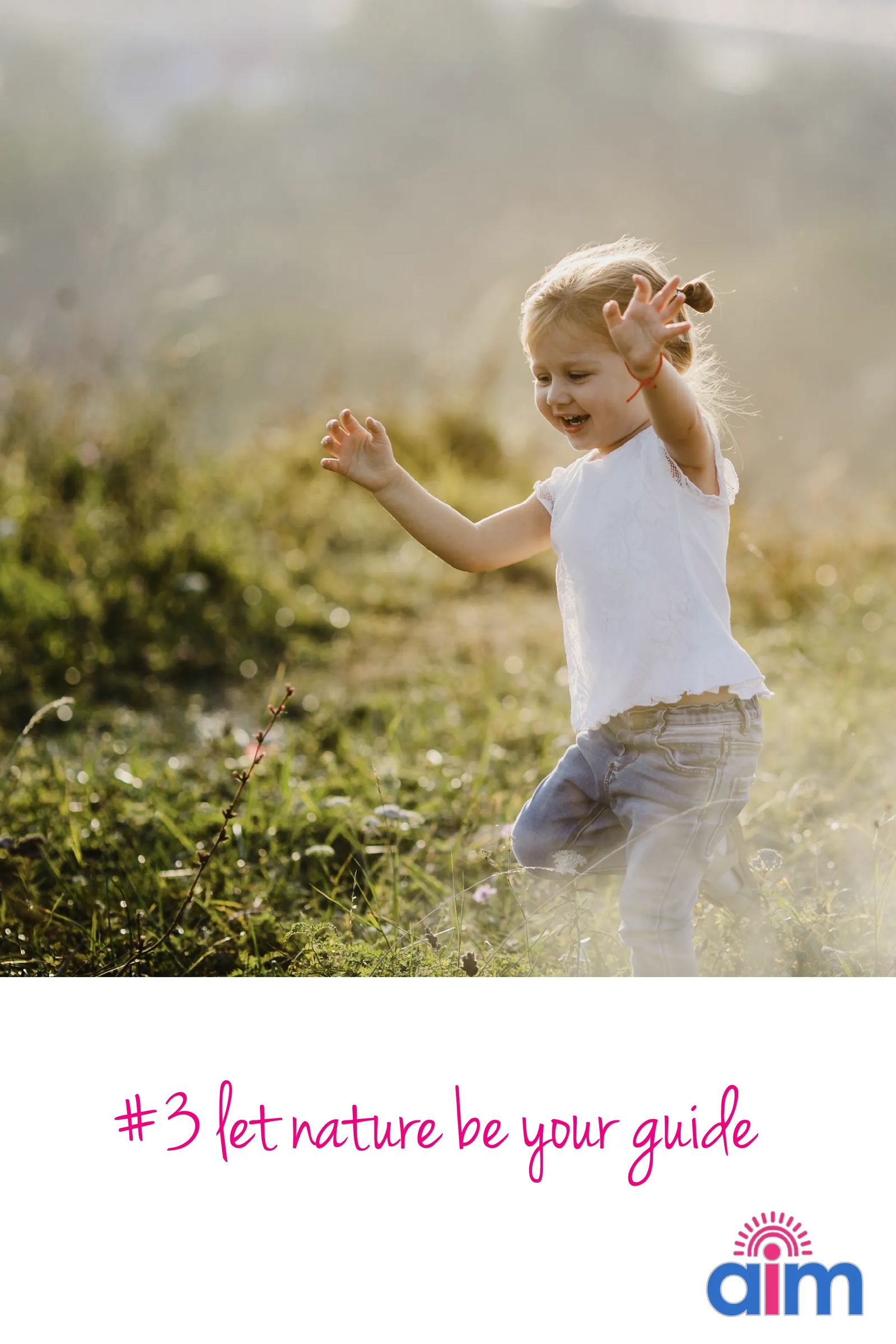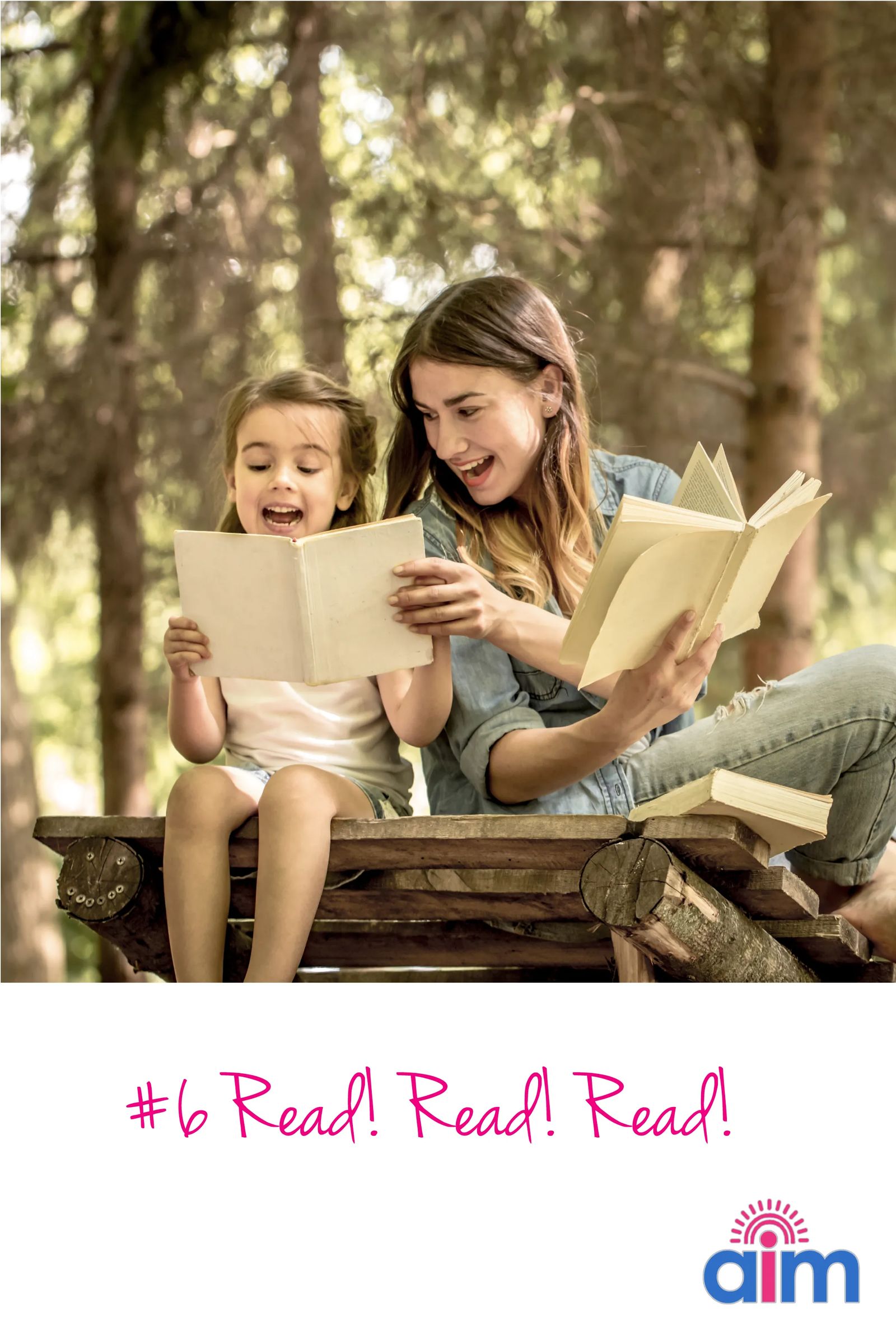6 Ways to Benefit from Montessori’s Wisdom this Summer

Can you believe it--it’s almost summer! Whoa! Where did the school year go? Are you a parent wondering how you’ll keep all the wonderful benefits of your child’s Montessori education going once school is out? Never fear! The Montessori method is just as applicable at home as it is in the classroom. Here are six ways that you and your child can benefit from Maria Montessori’s wisdom this summer:
1. “Follow the Child”
“Follow the child, they will show you what they need to do, what they need to develop in themselves and what area they need to be challenged in. The aim of the children who persevere in their work with an object is certainly not to “learn”; they are drawn to it by the needs of their inner life, which must be recognized and developed by its means.” ~ Maria Montessori.
The concept of following the child is a key principle of the Montessori Method. What we mean by this, is that whenever possible, take the time to observe your child just doing his thing. Take note of what interests him most, what is he drawn toward doing or learning, what does he seem to need to do (sometimes over and over)? Now give him the opportunity to (safely) pursue these interests. Following the child means giving your child the freedom to choose his activities/toys/materials based on what his inner developmental needs are driving him to seek out. Then hang back a bit, watch what he does without interrupting. Sometimes the best thing you can do to aid in your child’s development, is stay out of his way.
2. Let the “Prepared Environment” be the Teacher
“…we know that development results from activity. The environment must be rich in motives which lend interest to activity and invite the child to conduct his own experiences." ~ Maria Montessori
Another key principle behind the Montessori method is what Montessori called the “prepared environment.” When you prepare the environment in a way that enables your child to do for herself, the environment (rather than you) becomes the teacher. Now your child can follow her own inner teacher.
An important piece of the well-prepared environment is that it should be self-correcting. This means that you, the parent, won’t have to tell your child when she has done something right or wrong. Your child can see for herself, for example, when she has poured a glass of water from a pitcher without spilling. If she does spill, refrain from correcting her. Allow her to clean up the spilled water and try again...and again until she masters the skill. Do not force the issue either. If she is experiencing a developmental need to learn how to pour, she will want to work at it. But if she shows no interest, move on to something else. Again, follow your child to see what she is naturally inclined to do (safely).

3. Let Nature be your Guide
“There must be provision for the child to have contact with nature, to understand and appreciate the order, the harmony and the beauty in nature… so that the child may better understand and participate in the marvelous things which civilization creates.” ~ Maria Montessori
Summer is the ideal time to let the great outdoors become your
child’s learning environment. Maria Montessori encouraged learning from nature; children develop their senses, coordination, and so much more through interactions with nature. If possible, get outside with your child every day-- even when it’s raining. Take walks together, letting your child set the pace. Stop and take notice of your surroundings then talk about what you see/ hear/ smell/ etc. Let your child have her own place (could just be a flowerpot) to grow things. Start a “nature collection,” such as rocks, flowers, or leaves.
4. Get Practical
"The reaction of the children may be described as a ’burst of independence’ of all unnecessary assistance that suppresses their activity and prevents them from demonstrating their own capacities. It is just these ’independent’ children of ours who learn to write at the age of four and a half years, who learn to read spontaneously, and who amaze everyone by their progress in arithmetic. These children seem to be precocious in their intellectual development and they demonstrate that while working harder than other children they do so without tiring themselves. These children reveal to us the most vital need of their development, saying: 'Help me to do it alone!'" ~ Maria Montessori
Practical life lessons are some of the most important of all the Montessori principles and--bonus--are easily carried over from school to home. Practical life lessons give your child an opportunity to develop his sense of order, coordination of movement, concentration, and independence. And they are as simple as involving your child in everyday tasks around the house. Here is a sampling of tried-and-true Montessori practical life activities appropriate for children as young as 2½ years old:
- Dressing
- Tying shoes
- Buttons, buckles, snaps
- Hair-brushing/ braiding
- Hygiene
- Brushing teeth
- Washing hands
- Cleaning fingernails
- Blowing nose
- Hanging coat
- Putting lessons/toys/etc. away
- Folding
- Dusting
- Polishing (shoes, mirrors, etc.)
- Sweeping
- Clearing/washing dishes
- Wiping tables
- Opening boxes/jars/bottles/bags
- Tweezing small objects such as beans
- Spooning beans from one bowl to another
- Pouring/funneling grain from one vessel to another
- Pouring/funneling water from pitcher to glass
- Sponge squeezing
- Using tongs
- Using a dropper
- Using clothes clips
5. Be Sensational
“The training and sharpening of the senses has the obvious advantage of enlarging the field of perception and of offering an ever-more solid foundation for intellectual growth. The intellect builds up its store of practical ideas through contact with and exploration of the environment….” ~Maria Montessori
Sensorial activities are another necessary component of the Montessori Method. Your child needs an abundance of sensory information to build the neurological connections that are essential to human intelligence. This is one of the most natural and integral ways in which human beings learn and develop. Sensorial development is the foundation on which your child will build her own intelligence. Fortunately, it isn’t hard to come up with your own sensory materials and activities. Learning materials should help you child learn concepts like color, shape, texture, temperature, weight, volume, tone, fragrance and flavor.

6. Read! Read! Read!
"The secret of success is found to lie in the right use of imagination in awakening interest, and the stimulation of seeds of interest already sown by attractive literary and pictorial material….” ~ Maria Montessori
Studies have consistently shown that children that grow up in “reading families” are more academically successful. Establish read-aloud routines at home. Make it part of your daily activities to enjoy reading aloud to your children, even if it’s only for 5-10 minutes at a time. Reverse the role with older children and let them read aloud to you. Don’t forget to keep yourself reading too. Children that see their parents reading are more likely to think of reading as a fun activity.






















